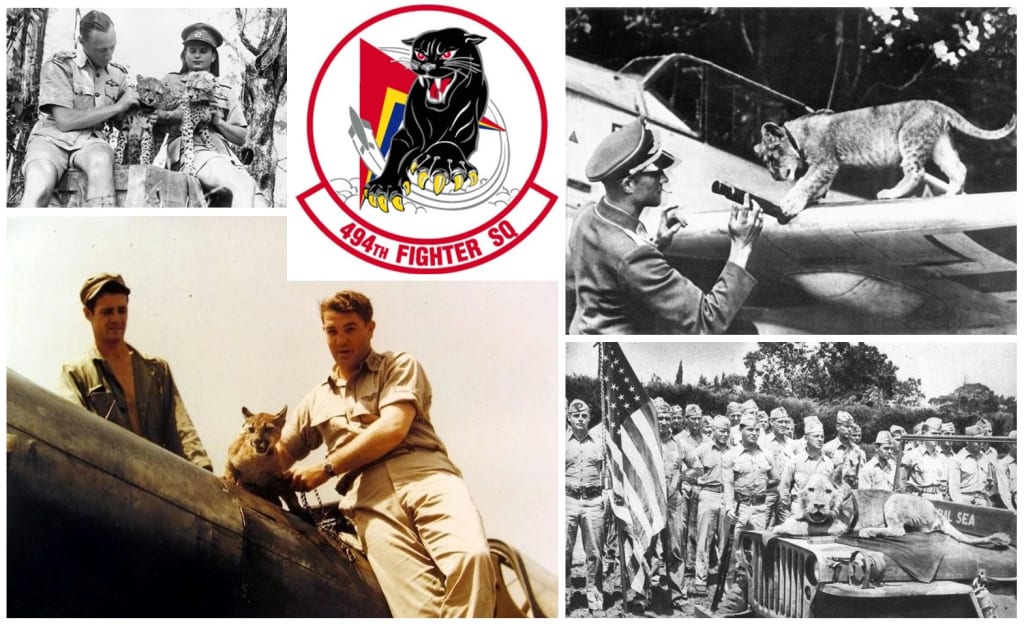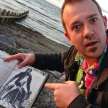On the Origins of the Naturalised Big Cats of Britain
In this brief article, Tim Whittard (Lead Researcher and Co-Producer of award-winning documentary ‘Britain’s Big Cat Mystery: The History, The Search, The Science') examines some historical rumours and events which precede the Dangerous Wild Animals Act of 1976, in the hunt for clues and additional detail as to how the now naturalising pseudo-populations of big cats in the United Kingdom came to find themselves living secretly in the countryside of rural Britain.

In my article of August this year, "On the Origins of the 'Dangerous Wild Animals Act' of 1976", I discussed and outlined the events which brought about the introduction of the aforementioned legislation (Whittard, 2020). However, this is not the true origin of the British big cat phenomenon, and there is an additional story to be told, which goes some considerable way to shedding further light on the mystery of how the big cats of Britain came to be living and breeding in the wilderness of the United Kingdom.
Imagine if you will; the year is 1944 and the rumbles and screams of enormous engines can be heard, as fighter planes litter the skies over RAF Ibsley in Hampshire. This sight is not an unusual occurrence; the ‘Battle of Britain’ is well underway and the collective efforts of the over-stretched allies are thrown into repelling the aerial invaders of the Luftwaffe. However, the fighter planes in question are not being flown by British pilots, but American ones; specifically, the 494th Fighter Squadron of the US Air Force, affectionately nick-named ‘The Panthers’ (The Wartime Memories Project, 2020).
So why is this relevant to the British big cat story, especially given that these “panthers” were not literal ones? The answer is simple; their mascots…
The insignia of the 494th Fighter Squadron featured a big black cat, a ferocious and menacing depiction of a panther, designed to instil a sense of confidence in the servicemen and women, whilst promoting fear in their enemies. This artful exercise in pinning a unique identity to the squadron did not remain the exclusive realm of the tailors and seamstresses tasked with embroidering the iconic emblems onto the uniforms of the servicemen and women; nor was it restricted to the painters and sign-writers who emblazoned the aircraft with colourful logos and designs. For in amongst the chaos of war and the mass movement of people heading east across the Atlantic Ocean to the battlefront in Europe, there were a (potentially large) number of soldiers and military personnel with unusual travelling companions.
Essentially, the point I am getting to is that a number of American soldiers are thought to have arrived in Britain, with pumas and panthers in tow. These majestic apex predators were essentially mascots, animal icons that served to inspire and motivate the soldiers who travelled alongside them; and yet, one important question remains…
Upon arrival on the shores of Britain during the height of rationing, and further beyond to the aftermath of the war, what became of these mascots?!
The truth is that records are at best sketchy, and at worst riddled with omissions and missing details; so the remnants of the story must be pieced together if any accuracy is to be garnered and helpful conclusions are to be drawn. Essentially much of the story of the big cats of Britain remains ‘out there’ to be told, but the details are scattered haphazardly in the old handwritten journals which were kept by homesick soldiers, many of which now serve as heirlooms in the private collections of families long bereft of their fallen war heroes.
However, that is not the end of the story and there are further layers of the metaphorical onion which can be peeled back in hopeful examination for more clues. One such notion which rears its head from time to time, focuses on the enforced rationing which was commonplace across and throughout Britain during WW2. Feeney-Hart (2013) reports on this very issue, describing how the British government advised its citizens to enact a cull of their animals in order to preserve food rations for the human population; this later became known as the ‘British Pet Massacre of 1939’, and in the space of one week it is estimated that 750,000 pets were killed. Newquay Zoo (2020) also point out that zoo animals were not always much luckier…
Reading between the lines it is clear that some owners of exotic big cats would have had very difficult decisions to make with the outbreak of war and the onset of rationing; the choice between feeding their family, or feeding their cats, the latter of which being obligate carnivores would have been unable to obtain the necessary nutrition to survive from any source other than a diet consisting purely of meat.
So there it is; the outbreak of WW2 may have itself directly contributed to the first wave of deliberately released big cats in the British Isles. Such animals may have been initially released from the pre-existing collections and menageries of exotic animals accrued during the previous decades and centuries of British colonialism. This may have seeded the initial nucleus of a new pseudo-population of big cats in Britain, which it seems were possibly further stocked by the arrival of military mascots from across the pond…
Written by Tim Whittard.
REFERENCES
Feeney-Hart, A. (2013) The little-told story of the massive WWII pet cull. BBC. [Online] – Available from: https://www.bbc.co.uk/news/magazine-24478532 (Accessed on 10th October 2020).
Newquay Zoo (2020) World War Zoo – Growing Food for People and Animals in Wartime. [Online] – Available from: https://www.newquayzoo.org.uk/userfiles/userfiles/file/1_%20World%20War%20Two%20and%20Rationing.pdf#:~:text=During%20World%20War%20Two%20%28often%20shortened%20to%20WW2%29,tea%20and%20butter%20you%20could%20buy%20each%20week. (Accessed on 10th October 2020).
The Wartime Memories Project (2020) RAF Ibsley during the Second World War. [Online] - Available from: https://wartimememoriesproject.com/ww2/airfields/airfield.php (Accessed on 10th October 2020).
Whittard, T. (2020) On the Origins of the 'Dangerous Wild Animals Act' of 1976. Vocal Media. [Online] – Available from: https://vocal.media/petlife/on-the-origins-of-the-dangerous-wild-animals-act-of-1976 (Accessed on 10th October 2020).
About the Creator
Tim Whittard
Tim Whittard is a mental health nurse specialising in psychiatric intensive care. Additional interests include; parapsychology and zoology/cryptozoology. He has written and published several essays and also a bestselling book.






Comments
There are no comments for this story
Be the first to respond and start the conversation.